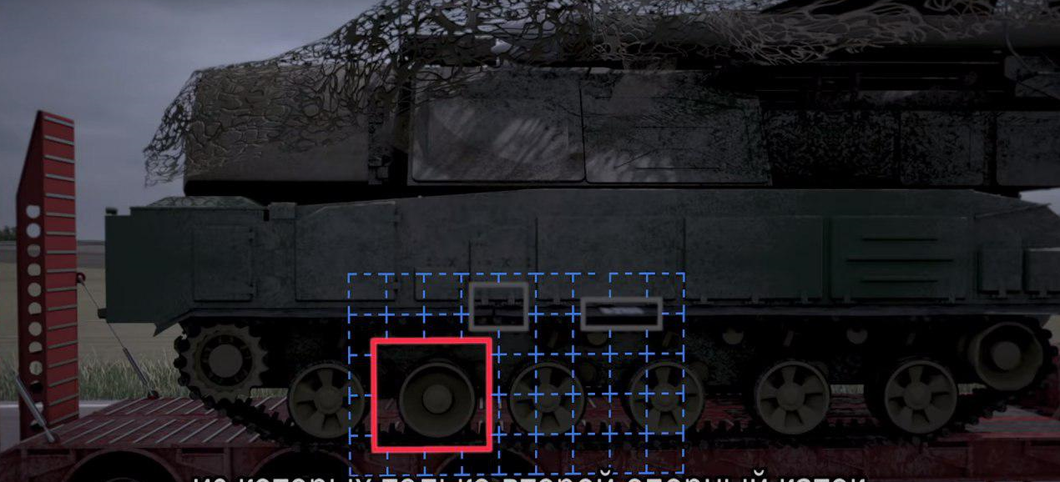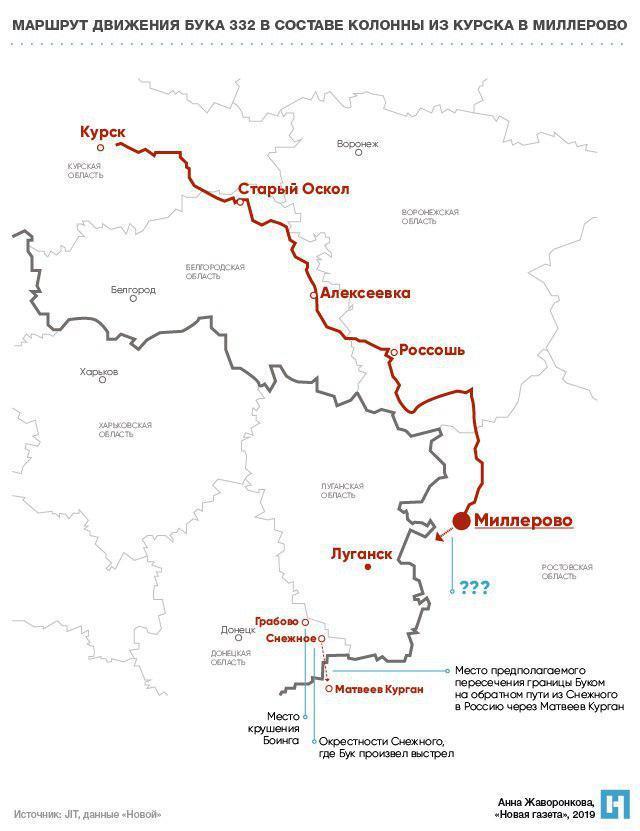
A batch of documents has been published showing that more than 170 servicemen of Russia's air defense units were deployed near the border with Ukraine in Rostov region on the day when a Malaysian Airlines passenger jet flight MH17 was shot down with a Buk missile, with all 298 passengers and crew being killed in the crash.
A Russian newspaper Novaya Gazeta got hold of unclassified documents on providing safety on public roads during the deployment of Russian troops in June 2014.
Also at the journalists' disposal are extracts from army orders on food provision for said personnel, including field rations.
"Documents show that more than 170 servicemen of Russian air defense units were near the border [with Ukraine] in Rostov region on the day when flight MH17 was attacked from the Buk air defense system. And on July 15, two days before the Boeing tragedy, they received 5-day field rations," the newspaper writes.
The International Investigation Team (JIT), which is probing the tragedy, concluded that Boeing was attacked from the Buk launcher, which was in possession of pro-Russian militants in Donbas. The launcher, investigation says, was transferred from the Russian territory and belonged to the 53rd Air Defense Brigade (military unit 32406) based near Kursk. JIT experts researched witnessed testimony and amateur photos and videos shot on June 23-25, 2014, namely, those showing the movement of convoys of Russian military equipment on public roads in proximity to Russia's western border. On the footage, the "Buk" missile launcher is seen with a partially readable registration number 332.


The videos shot in the Ukrainian Donbas clearly show that the "Buk" was being transferred on a lowloader carried by a white Volvo truck, accompanied by several civilian vehicles. Russian authorities, and first of all, the Russian Ministry of Defense, called the JIT report unfounded, and video and photo materials – tailored.

"The JIT conclusions about the route of the movement of the Kursk [unit's] Buk 332, as we can see, can be confirmed by the very documents of the military, which are at the disposal of the Novaya Gazeta. A message of June 22, 2014, issued by an officer on duty of the 11th regional military auto inspection [VAI] Captain Belyayev we learned about the order to the chiefs of territorial VAI units to organize the escort of military equipment on public roads on June 23. The order was sent, in particular, to the chiefs of the 56th Kursk and 47th Voronezh VAI, which once again confirms the established route," the newspaper writes.

From the documents studied by journalists, it follows that the transportation of the equipment of the Kursk air defense brigade was carried out by the 69th logistics brigade (military unit 11385). In another document, signed by the Lieutenant Colonel Aladyin of the 69th brigade, there is a list of several trucks and their drivers who will arrive in Kursk from Belgorod to then travel further. In particular, a KamAZ truck is mentioned with a “black” [military] registration plate 4267 AH and its driver, Private A.N. Butikov. Later, it is this particular KamAZ that will be spotted in an amateur video as it was transporting "Buk 332" to Millerovo.
Aladyin also notes that Senior Lieutenant Iskanderov was appointed head of the KamAZ convoy. The names of another two officers are also provided "for reference and coordination": Lieutenant Colonel Vitaly Ryzhov and Major Alexei Egorov.
“So, from June 23 to June 25, a convoy of military equipment was travelling from Kursk to a Millerovo military base near the Ukrainian border. This is confirmed by the amateur footage and the very documents of the military. Further events can be reconstructed according to the documents on food provision for personnel. In particular, it is about a daily ration of three hot meals both in base and field conditions," writes Novaya Gazeta.
As follows from the order, signed by Acting Commander of Unit 32406, Lieutenant Colonel Demidov and Acting Chief of Staff Major Gorbatykh, the Kursk military arrived in Millerovo on July 15, 2014. The document lists the names of more than 170 people; the first among them is the commander of the unit, Colonel Muchkaev.
"The following [servicemen]... shall be considered as those deployed to Millerovo for combat duty from July 15, 2014. Food provision shall be assigned from July 15 and 5-day field rations shall be issued. Food provision shall be ceased from July 15," the document says.
The order is based on a telegram sent by Commander of the Russian Air Defense Forces of July 13, 2014.

"We should once again emphasize curious details: it follows from the documents that the air defense troops arrived in Millerovo almost three weeks after their equipment did; they were assigned food provision, which was immediately lifted, while they also received 5-day field rations (issued when cooking hot meals is impossible). Judging by these details, the troops clearly did not intend to stick around for long with their 'combat duty' 30 km from the border and, having grabbed their field rations, deployed from Millerovo to another location. Is this the case? And how can one explain that soon, one of the vehicles of the Kursk air defense brigade was spotted on the other side of the border?" the journalists note.
The publication reminds that in a telephone conversation between Russian General Oleg Ivannikov and "LPR" field commander Oleg Bugrov, held on July 14, 2014, the latter complained about Ukrainian military aircraft, which "engage positions" of separatists. In response, Ivannikov said they should hold on for “a couple more days": "We already have a Buk. We'll be f*... shooting them down."
According to the Novaya Gazeta, this and other telephone conversations now at the JIT disposal may form the basis of charges to be put forward against specific Russian commanders.
"The fact of the arrival of servicemen from the Kursk unit to Millerovo, which is close to the border, on July 15 aggravates suspicions and substantiates the questions raised by JIT investigators last year. For example, who transferred the launcher in both directions and who was in the crew? Are their names among those on the list of 170 soldiers from the 53rd brigade, who arrived to the border for 'combat duty'? Who gave them orders?" asked journalists.
Officially, the command of the 53rd brigade provided no comment on reports regarding their involvement in the MH17 tragedy (and any other reports, too). For several years, the Russian Defense Ministry has been repeating that no military equipment has crossed the border.
The journalists decided, without intermediaries, to talk with the former soldiers and those on active service with the 53rd brigade.
Ivan Evseenko was not deployed to Millerovo, only starting his service a few days after the MH17 tragedy. Now he has resigned from military service.
"Well, that was before I was there. Nobody believed we could've done this – some of our people can't even drive a KamAZ, and here we're talking about a whole anti-aircraft system. I still don’t believe this," said the young man.
The journalists could not get in touch with the officer of the 53rd brigade on active duty, Major Ilya Baibakov. It was Baibakov who was supposed to provide field rations of soldiers who accompanied the truck with the "Buk".
Major of the medical unit of the 53rd brigade, Irina Kolesnik, also appears on the list of the military who were deployed to Millerovo. Now she works at a Kursk polyclinic of the Ministry of Internal Affairs. She agreed to have a chat with journalists. However, during the meeting, Kolesnik sought to know how journalists learned about her and her current job. On the tragic events of July 2014, the conversation never worked out. At the end of that short chat, the major noted: "I can’t say anything to you. I don’t have the right to speak about the actions (of our Motherland)."

